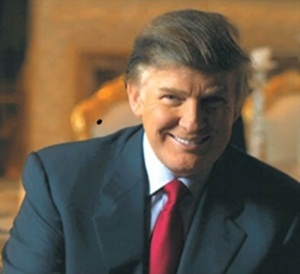US President Donald Trump on Monday declared a national emergency over threats to the country’s telecommunication services. Trump signed an Executive Order - Securing the Information and Communications Technology and Services Supply Chain - declaring that threats to the information and communications technology and services supply chain by foreign adversaries are a national emergency.

The order does not name specific countries or companies but appears to target Chinese tech giant Huawei, the world's biggest supplier of network gear used by phone and internet companies. The Executive order is widely seen as another US trade measure against China.
The Executive Order prohibits transactions that involve information and communications technology or services designed, developed, manufactured, or supplied, by persons owned by, controlled by, or subject to the jurisdiction or direction of a foreign adversary whenever the secretary of commerce determines that a transaction would pose a threat to national security, as articulated in the Executive Order.
The secretary’s determination would be based on consultations with the Attorney General, the secretaries of treasury, state, defence, and homeland security, the United States Trade Representative, the director of National Intelligence, the administrator of General Services, the chairman of the Federal Communications Commission, and the heads of other appropriate agencies. In carrying out this mission, the Department of Commerce will issue regulations within 150 days to establish procedures for reviewing such transactions.
"President Trump is acting once again to protect US national security. This Executive Order addresses the threat posed by foreign adversaries to the nation's information and communications technology and services supply chain," said commerce secretary Wilbur Ross. "Under President Trump's leadership, Americans will be able to trust that our data and infrastructure are secure."
The commerce secretary, in consultation with the secretary of state, is authorized to submit reports to Congress on the national emergency declared in the Executive Order.
The director of National Intelligence is required to produce an assessment within 40 days of the Executive Order on the risks to the United States government, critical infrastructure, and the American people from information and communications technology or services designed, developed, manufactured, or supplied by persons owned by, controlled by, or subject to the jurisdiction or direction of a foreign adversary.
The secretary of homeland security, in coordination with sector-specific agencies and coordinating councils, must produce a written assessment within 80 days of the Order evaluating vulnerabilities in hardware, software, and services that threaten the national security of the United States. This assessment will also evaluate to what extent the hardware, software, or services are relied upon by service providers and critical infrastructure entities.
Within one year of the Executive Order, the commerce secretary, in consultation as appropriate with the secretaries of treasury, homeland security, state, defence, the Attorney General, the United States Trade Representative, the director of National Intelligence, and the chairman of the Federal Communications Commission must report to the President whether the actions taken are sufficient and continue as necessary to mitigate the risks identified in the Order.
US justice and intelligence officials say Chinese economic espionage and trade secret theft are rampant.
US officials, however, have not presented any evidence of Huawei equipment in the US or elsewhere being compromised by backdoors installed by the manufacturer to facilitate espionage by Beijing. Huawei vehemently denies involvement in Chinese spying.
Reports citing unidentified US administration officials said the order was "company and country agnostic" and that it would not be retroactive. Officials said "interim regulations" were expected before final rules were set but were vague on what that meant.
In a statement, Federal Communications Commission chairman Ajit Pai called the executive order "a significant step toward securing America's networks."
"It signals to US friends and allies how far Washington is willing to go to block Huawei," said Adam Segal, cyber security director at the Council on Foreign Relations. Many in Europe have resisted a fierce US diplomatic campaign to institute a wholesale ban on the Chinese company's equipment in their next-generation 5G wireless networks.
Democratic Sen. Mark Warner, vice chairman of the Senate Intelligence Committee and a former telecoms executive, called the order "a needed step" in a statement endorsing the State Department's contention that Chinese law compels Huawei to act as an agent of the state. He cautioned, however, that its implementation not "harm or stifle" legitimate business.
The order's existence in draft form was first reported by The Washington Post last June. Segal said that with U.S.-China trade talks at a standstill, the White House "felt the time had finally come to pull the trigger."
It is a "low-cost signal of resolve from the Trump administration," Segal said, noting that there is little at stake economically.
All major US wireless carriers and internet providers had already excluded the use of Chinese-made equipment after a 2012 report by the House Intelligence Committee that Huawei and ZTE, China's No 2 telecoms equipment company are acting as enablers of Beijing-directed espionage.
Last year, Trump signed a bill that barred the US government and its contractors from using equipment from the Chinese suppliers.
The FCC also has a rule in the works that would cut off subsidies for companies that use any equipment banned as posing a national security threat. Huawei's handsets are virtually nonexistent in the US, and last week the FCC rejected a Chinese phone company's bid to provide domestic service.























